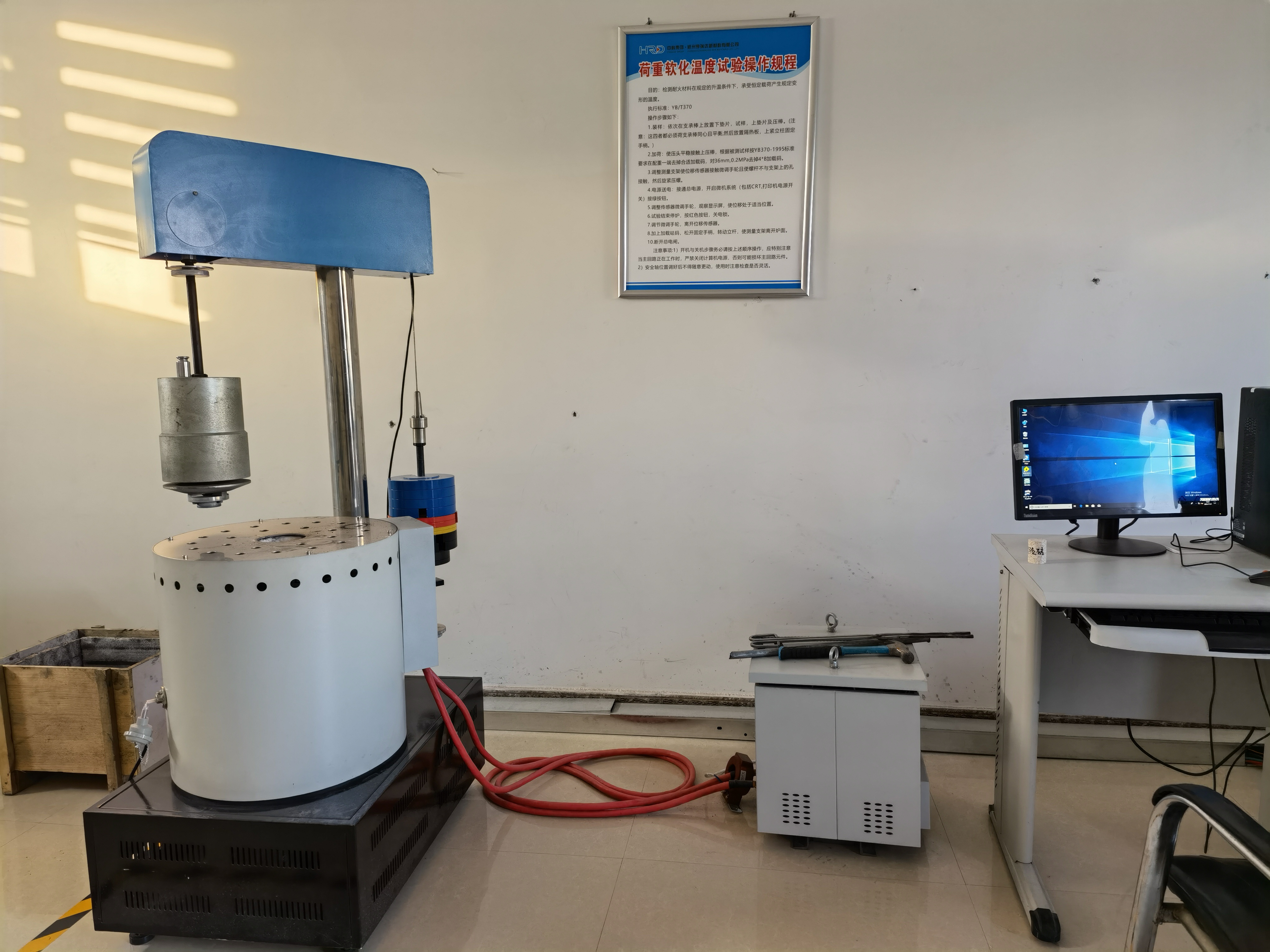Refractories under Load (R.U.L.) Test
Operating Procedures for R.U.L. Test
Objective: To detect the temperature at which the refractories are subject to specified deformation under a constant load with the specified conditions for temperature rise.
The operating steps are as follows:
1. Sample loading: To place the lower upper gasket, sample, upper gasket and pressing rod on the support rod in proper order. (Note: The four items must be concentric and balanced with the support rod, then to place the heat shield and to tighten the column fixed handle.)
2. Loading: To make the indenter contact the upper pressing rod smoothly, to remove the appropriate loading weights at one counterweight end according to the requirements of YB370-1995 standard for the tested sample, and to remove the 4*B loading weights for 36mm and 0.2MPa.
3. To adjust the measuring bracket so that the displacement sensor contacts the fine-tuning hand wheel and the screw is not in contact with the hole on the bracket, and then to tighten the pressing screw.
4. Power supply: To switch on the main power supply, and to turn on the microcomputer system (including the power switch of CRT and printer) to be connected to the green button.
5. To adjust the sensor fine-tuning hand wheel, to observe the display screen, and to make the displacement at an appropriate position.
6. To stop the furnace after the test, to press the red button and to turn off the electric lock.
7. To adjust the fine-tuning hand wheel, and to leave the displacement sensor.
8. To add the loading weights, to loosen the fixed handle, and to rotate the upright rod to make the measuring bracket away from the furnace surface.
9. To switch off the main switch.
Note: 1) Please follow the above procedures for the operation of startup and shutdown. To pay special attention to the circumstances when the main circuit is working, it is forbidden to turn off the computer power, or it may do damage to the main circuit components. 2) Never change it at will after adjusting the position of the safety shaft. To check if it is flexible in use.
Previous page
Next page




